Concrete Slab Crack Repair photo tutorial. Apply Emecole 555 mixed with sand followed by finish grinding. This project is continued from Part 1.
The crack in the outside corner of the patio slab was filled with sand to within 1″ of the surface forming a channel to hold the Emecole 555. Some run out from the side of the slab occurred, but not so much that I though it too wasteful.
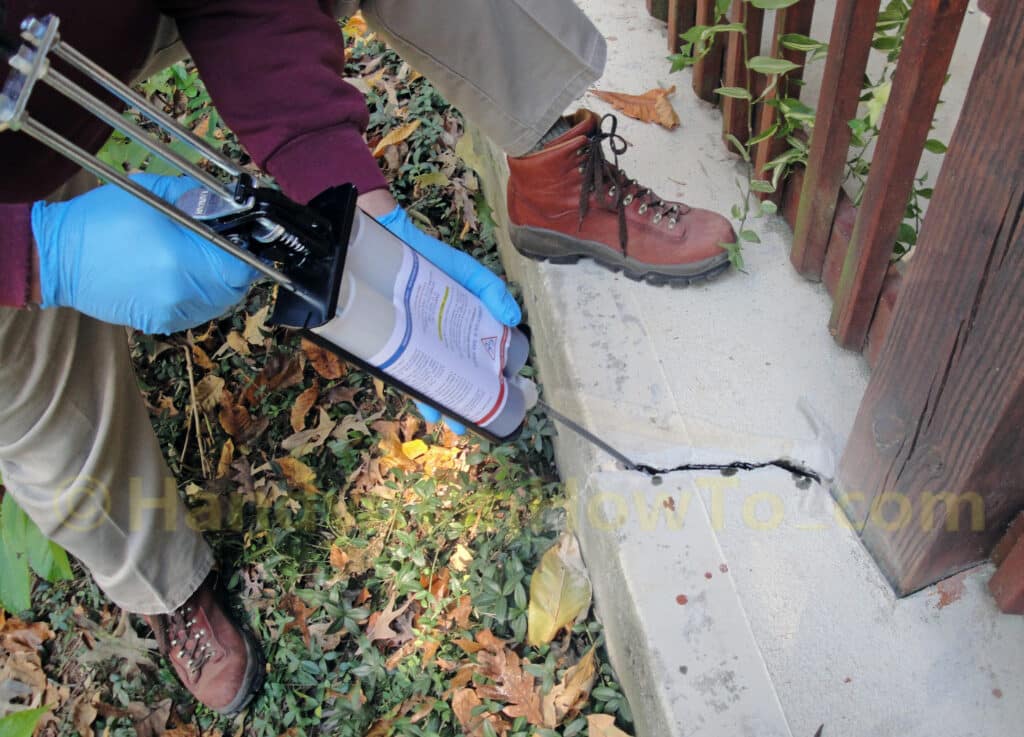
I made three passes over the crack, refilling the channel with the Emecole 555 as the material soaked into the crack. A cartridge of Emecole 555 is normally good for 100ft to 200ft of narrow cracks. I emptied over half the cartridge into a 7 foot long, wide and deep crack in the 6″ to 10″ thick concrete slab.
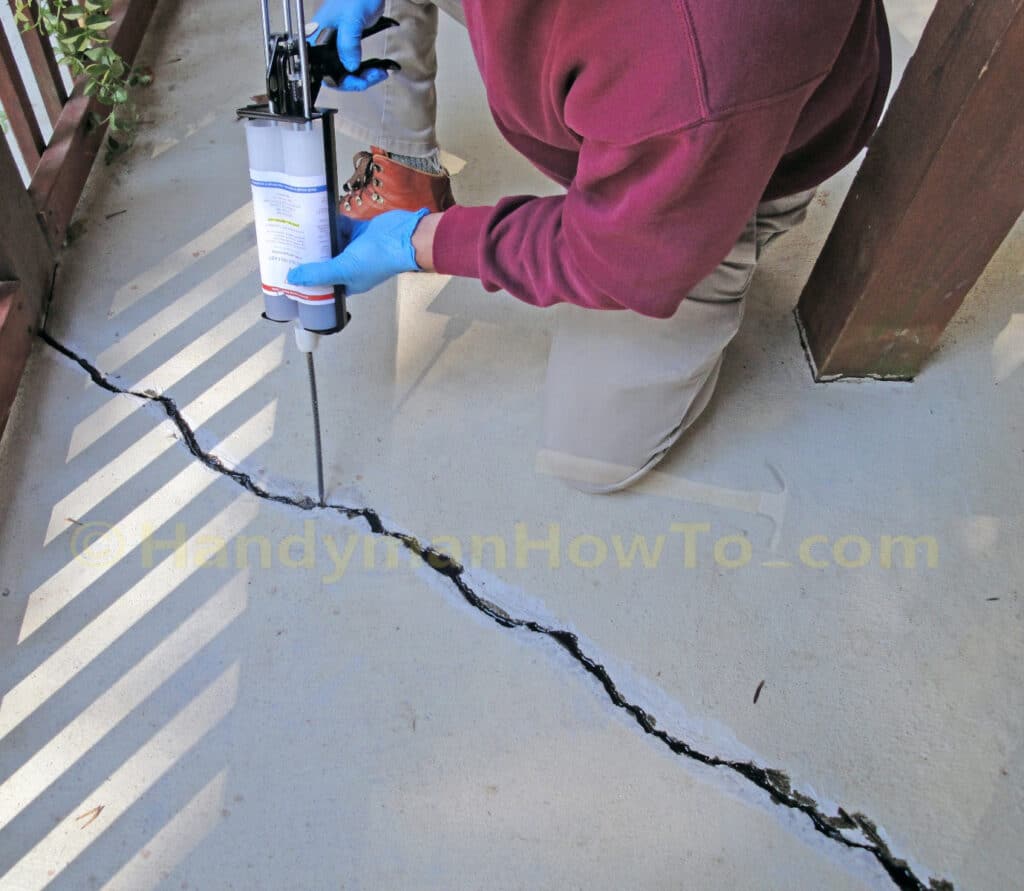
The concrete crack was topped off with more sand to soak up the Emecole 555 and bring it even with the slab.
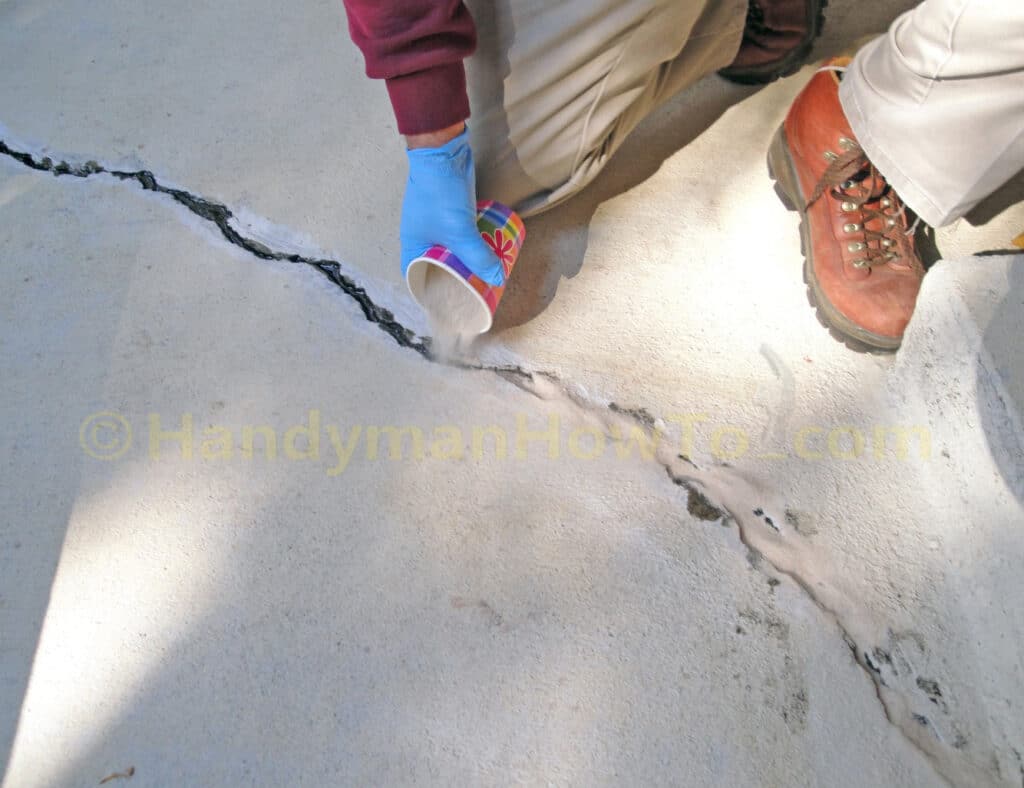
Several more passes of Emecole 555 were applied to the top coat of sand. It was better to make several light passes so the Emecole could soak into the sand, rather than a single heavy pass that would largely run off.
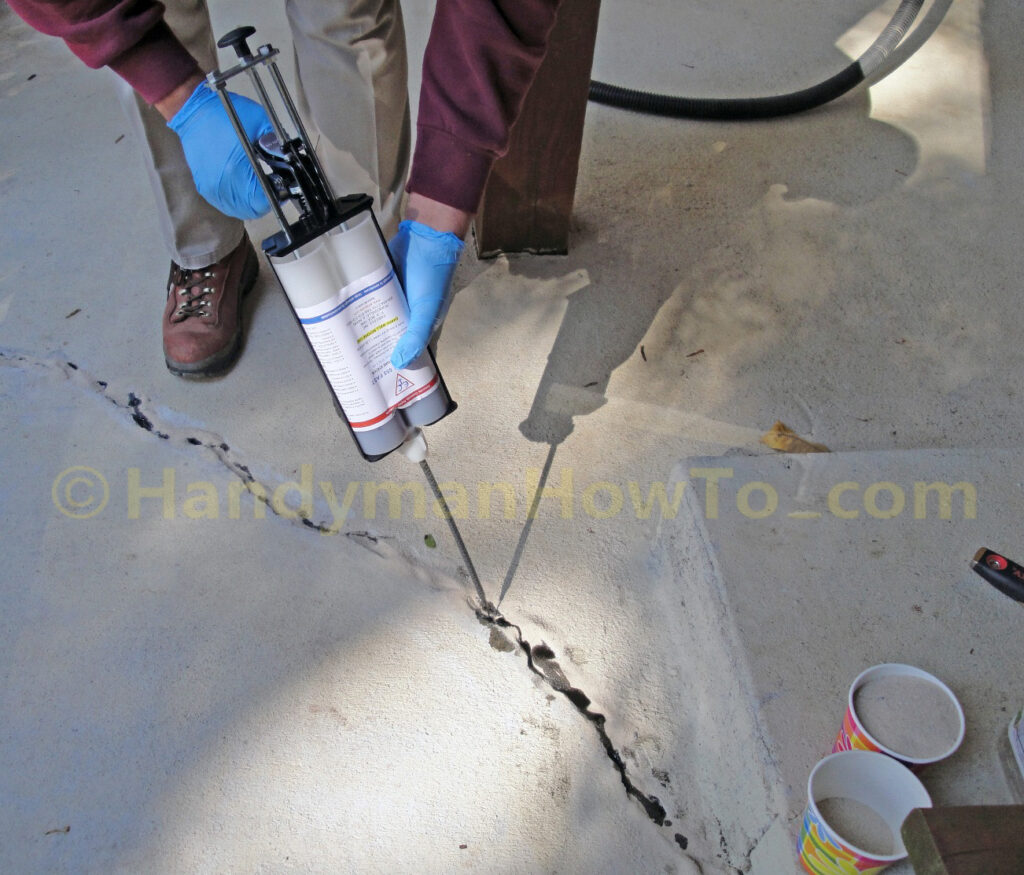
The crack was beveled off and tailored with a putty knife. The Emecole and sand forms a grout like mixture that was smoothed down for an even transition between the uneven slabs. Excess grout is tossed in the plastic jar. I packed some of the wet grout into the vertical crack along the edge of patio slab (see the first photo on this page).
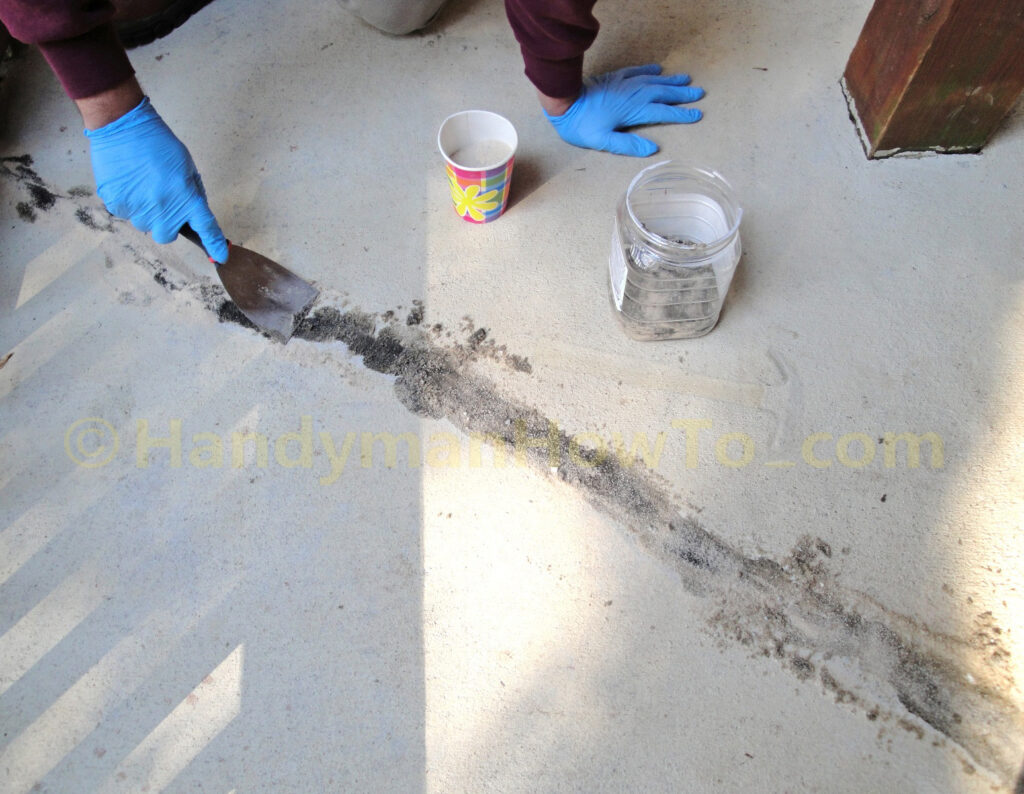
A light dusting of sand is spread over the curing Emecole 555 after scraping up the excess with the putty knife.
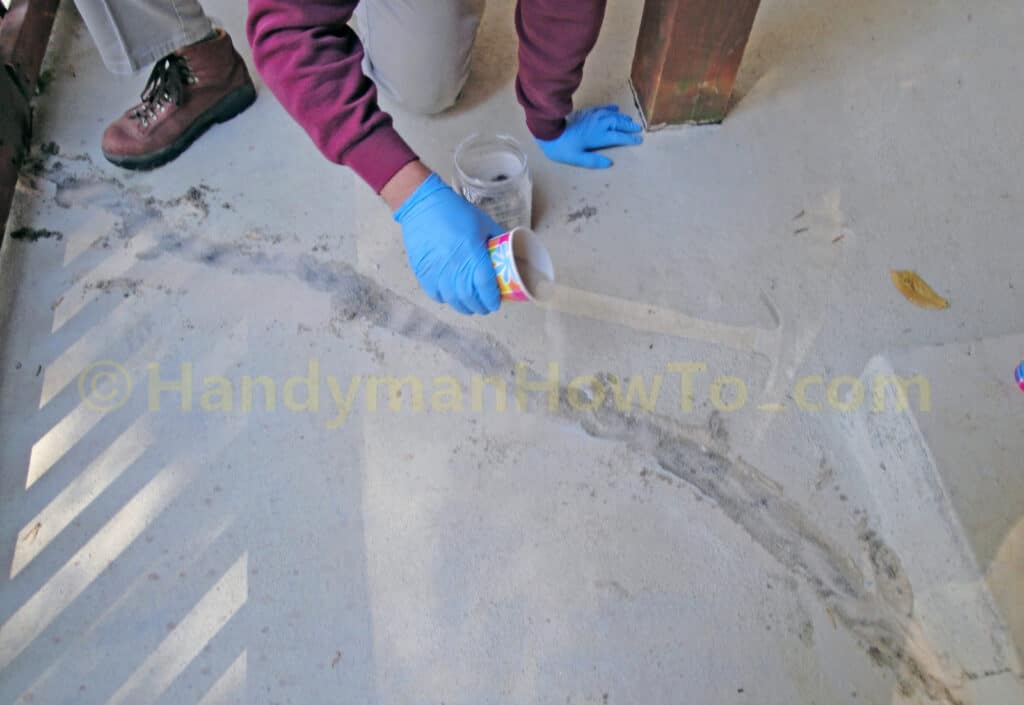
I used the entire cartridge of Emecole 555 to fill this wide and deep crack.
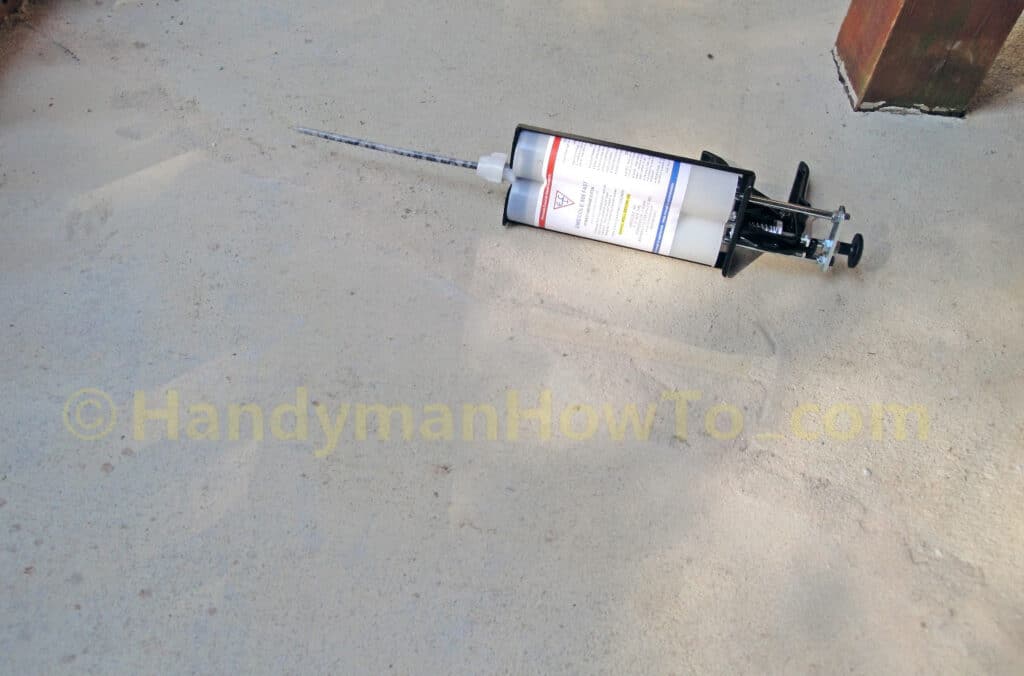
Emecole 555 Finish Grinding
The outside temperature was 48 degrees and dry on this early November afternoon. The Emecole 555 gelled within a few minutes, but took longer to fully cure and harden as judged by the Emecole sand/grout I saved in the plastic jar. With the temperature dropping to the high 20’s overnight, I left the Emecole to harden overnight.
The next morning I swept off the loose sand and finish grinded the cured Emecole 555 with the angle grinder and masonry wheel.
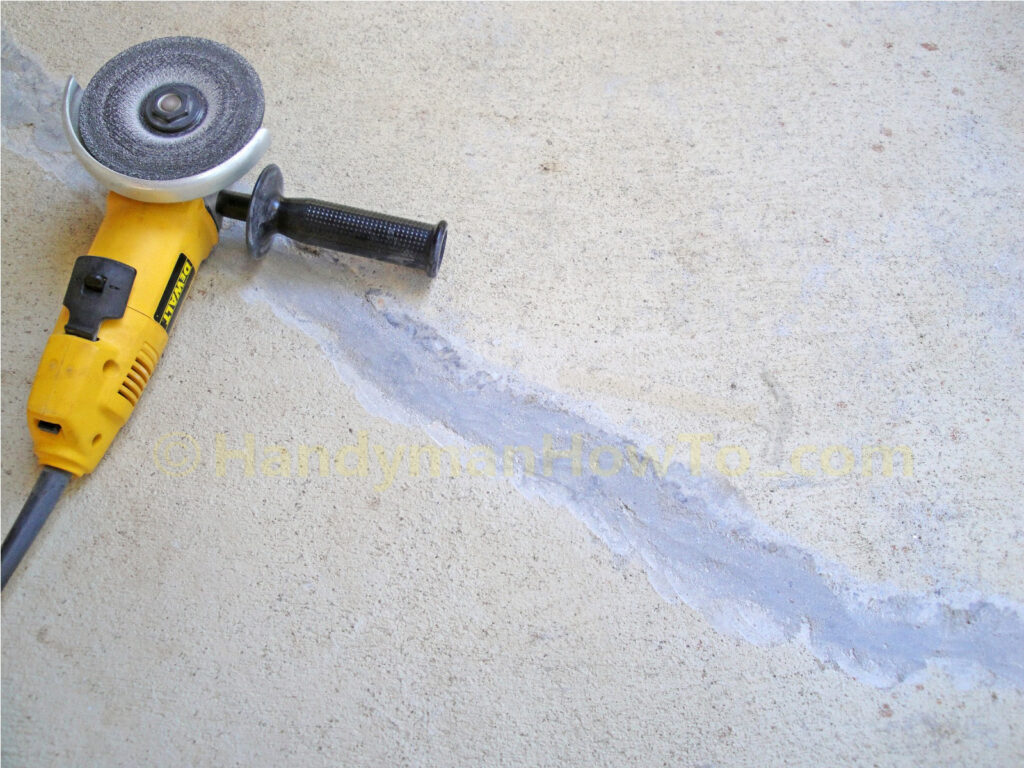
The results were amazing! The Emecole was rock-hard, felt like concrete, ground to smooth feather edge and turned to a concrete gray color.
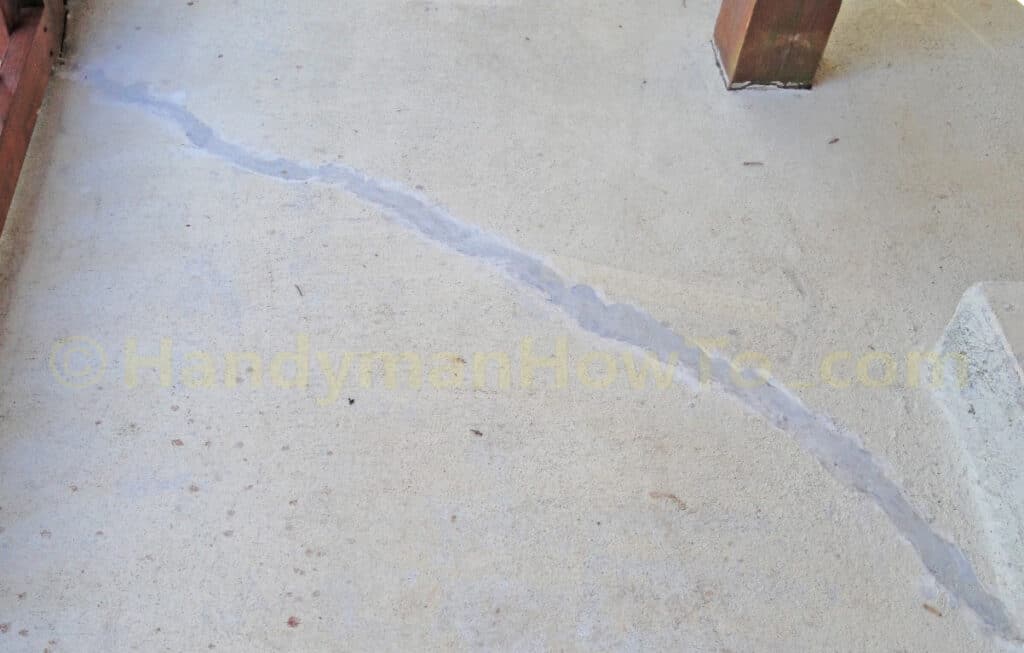
The buffed Emecole is paintable and will blend with the rest of the slab when I re-stain the patio.
Emecole 555 is now available in a single cartridge containing both resin and hardener for use in a standard caulk gun:
Application Tip
If I were to do this again – I would prime the beveled edges of the crack that I had ground on the concrete slab with some Emecole 555 squirted into a cup and painted on with a disposable foam brush. The primed concrete edges would have sealed more easily as I smoothed down the Emecole / sand grout mixture. As it were, I needed to make sure the grout was sufficiently moist to wet the beveled edge of the concrete. It’s really more of a cosmetic improvement if you need to fix a highly uneven crack such as this.
December 2013 Update
It’s been 3 full years since the concrete crack repair. I’m pleased to report the Emecole 555 has welded the crack closed with no movement.
Hope this helps,
Bob Jackson
Crack in concrete slab in living room, shoddy pour when house was built, how to repair? (Thin crack)
Hi Robert, hard to say without seeing a picture or description of size, width, and shape. Some staining/painting may make it disappear and make it a non-issue. Unless, you have concerns from a structural or further widening perspective.